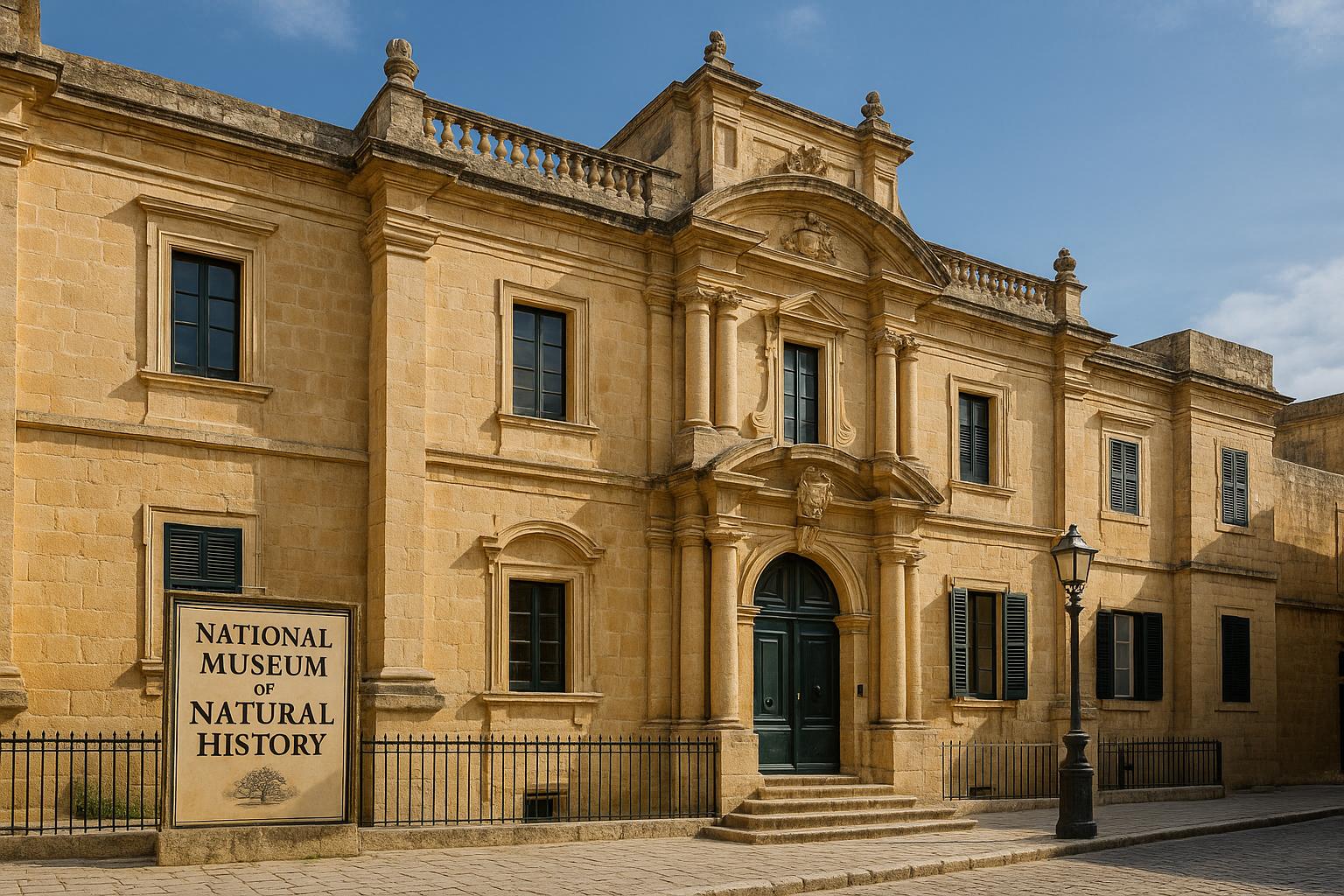Overview
The National Museum of Natural History, situated in the historic city of Mdina, Malta, offers an immersive journey into the diverse and rich natural heritage of the Maltese archipelago. The museum is housed within the majestic Palazzo Vilhena, a historical building that itself is a testament to Malta’s architectural and cultural history. The museum provides an in-depth exploration of the natural history of Malta, including its varied geology, distinctive ecosystems, and paleontological treasures.
History of Palazzo Vilhena
Palazzo Vilhena stands as an exquisite example of Baroque architecture. Constructed in the early 18th century, this remarkable building was designed during the reign of Grand Master António Manoel de Vilhena of the Order of St. John. Over the centuries, this grand palace has served multiple purposes. It has functioned as a hospital, among other roles, before being transformed into the home of the National Museum of Natural History in 1973.
Architectural Significance
Palazzo Vilhena is renowned for its architectural design, which epitomizes the grandeur and elegance of Baroque architecture. The symmetrical layout and ornate details reflect the artistic and cultural values of the time. Visitors to the museum can appreciate not only the natural history exhibits but also the historical and architectural significance of the structure that houses them.
Features and Collections
The museum’s collections span a broad range of topics and offer a multifaceted view of Malta’s natural environments. The exhibits are carefully curated to educate and inspire visitors about the island’s natural wonders.
Geology and Paleontology: The museum boasts an extensive collection of geological and paleontological specimens. Fossils found within the museum illustrate the ancient geological history of Malta, revealing the processes that shaped the islands over millions of years. These exhibits are vital for understanding the prehistoric past and the different species that once inhabited the region.
Maltese Wildlife: Exhibitions dedicated to Maltese wildlife highlight the unique flora and fauna native to the islands. In these displays, there is a strong emphasis on conservation efforts, showcasing the importance of sustainable practices to preserve Malta’s natural environment. Through detailed information and engaging displays, the museum fosters environmental awareness and appreciation for the country’s biodiversity.
Marine Life: Given Malta’s close association with the Mediterranean Sea, the museum features a thorough exhibition dedicated to marine species and their habitats. The displays provide insights into the variety of marine life that thrives around the Maltese Islands, from small crustaceans to larger marine mammals, emphasizing the ecological importance of marine conservation.
Visitor Information
The National Museum of Natural History is open throughout the year, welcoming all visitors interested in exploring Malta’s natural heritage. One of the highlights of the museum is its educational programs aimed at schools. These programs are designed to engage students with hands-on activities, fostering a curiosity and love for natural sciences.
The museum also offers interactive exhibits suitable for children and adults, providing an engaging experience that combines learning with exploration. This approach helps to make the museum a family-friendly destination, encouraging visitors of all ages to discover the fascinating aspects of natural history.
For detailed information on opening hours, ticket prices, and any special events, prospective visitors are encouraged to visit the official Heritage Malta website at Heritage Malta.
Educational and Social Impact
The National Museum of Natural History plays a crucial role in providing educational resources to both locals and tourists. By curating exhibits that focus on Malta’s unique natural heritage and the broader natural world, the museum serves as an educational hub that raises awareness about conservation and environmental stewardship.
Conclusion
The National Museum of Natural History in Mdina stands as a repository of knowledge and understanding for anyone interested in the natural world. By offering educational exhibitions along with significant historical insights, the museum plays a pivotal role in nurturing a deeper appreciation for Malta’s natural heritage. Its commitment to conservation and education ensures that the museum remains not only a treasure trove of information but also a vital contributor to the preservation and understanding of Malta’s unique natural environment.

